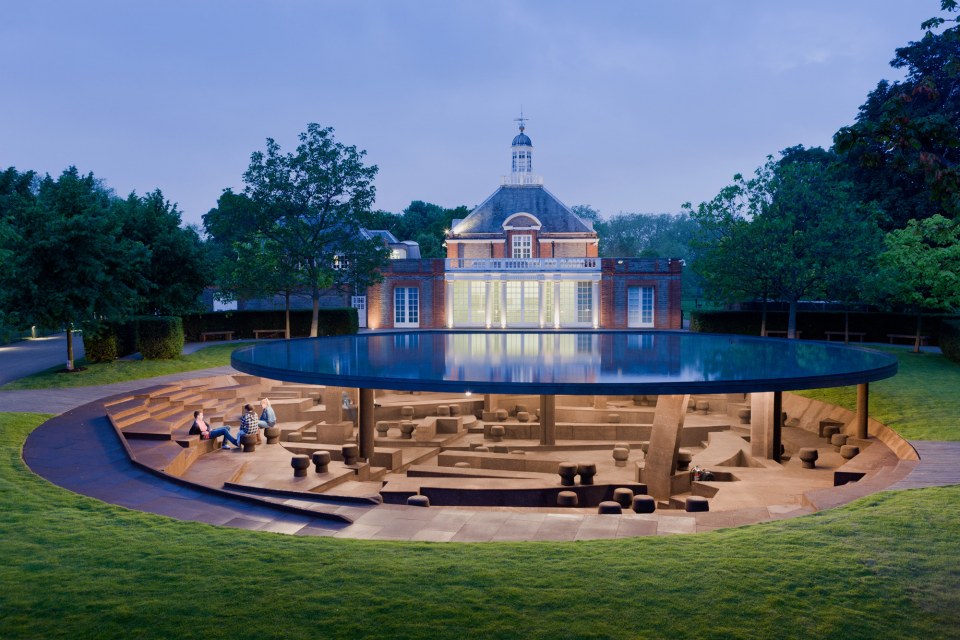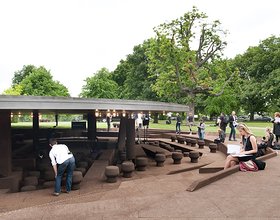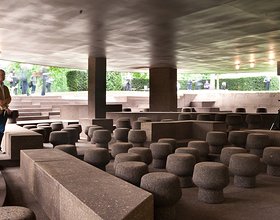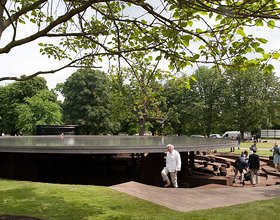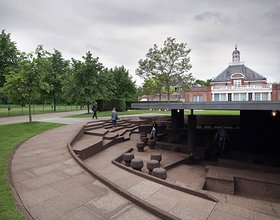SERPENTINE GALLERY PAVILION
-
Serpentine Gallery Pavilion’s design involves digging down some five feet into the soil of the park until the the groundwater has been reached. There the building create a waterhole, a kind of well, to collect all of the London rain that falls in the area of the Pavilion. As the project dig down into the earth to reach the groundwater, it encounters a diversity of constructed realities such as telephone cables, remains of former foundations or backfills. Like a team of archaeologists, Herzog & de Meuron and chinese artist Ai Weiwei identify these physical fragments as remains of the eleven Pavilions built between 2000 and 2011. Their shape varies: circular, long and narrow, dot shaped and also large, constructed hollows that have been filled in. These remnants testify to the existence of the former Pavilions and their more or less invasive intervention in the natural environment of the park.
All of these traces of former pavilions will now be revealed and reconstructed. The former foundations and footprints form a jumble of convoluted lines, like a sewing pattern. The plastic reality of this landscape is astonishing and it is also the perfect place to sit, stand, lie down or just look and be awed. In other words, the ideal environment for continuing to do what visitors have been doing in the Serpentine Gallery Pavilions over the past eleven years. The pavilion’s interior is clad in cork – a natural material with great haptic and olfactory qualities and the versatility to be carved, cut, shaped and formed.
On the foundations of each single Pavilion, it has been extruded a new structure (supports, walls, slices) as loadbearing elements for the roof of the new Pavilion – eleven supports all told. The roof resembles that of an archaeological site. It floats a few feet above the grass of the park, so that everyone visiting can see the water on it, its surface reflecting the infinitely varied, atmospheric skies of London. For special events, the water can be drained off the roof as from a bathtub, from whence it flows back into the waterhole, the deepest point in the Pavilion landscape. The dry roof can then be used as a dance floor or simply as a platform suspended above the park.
1870 Projects

